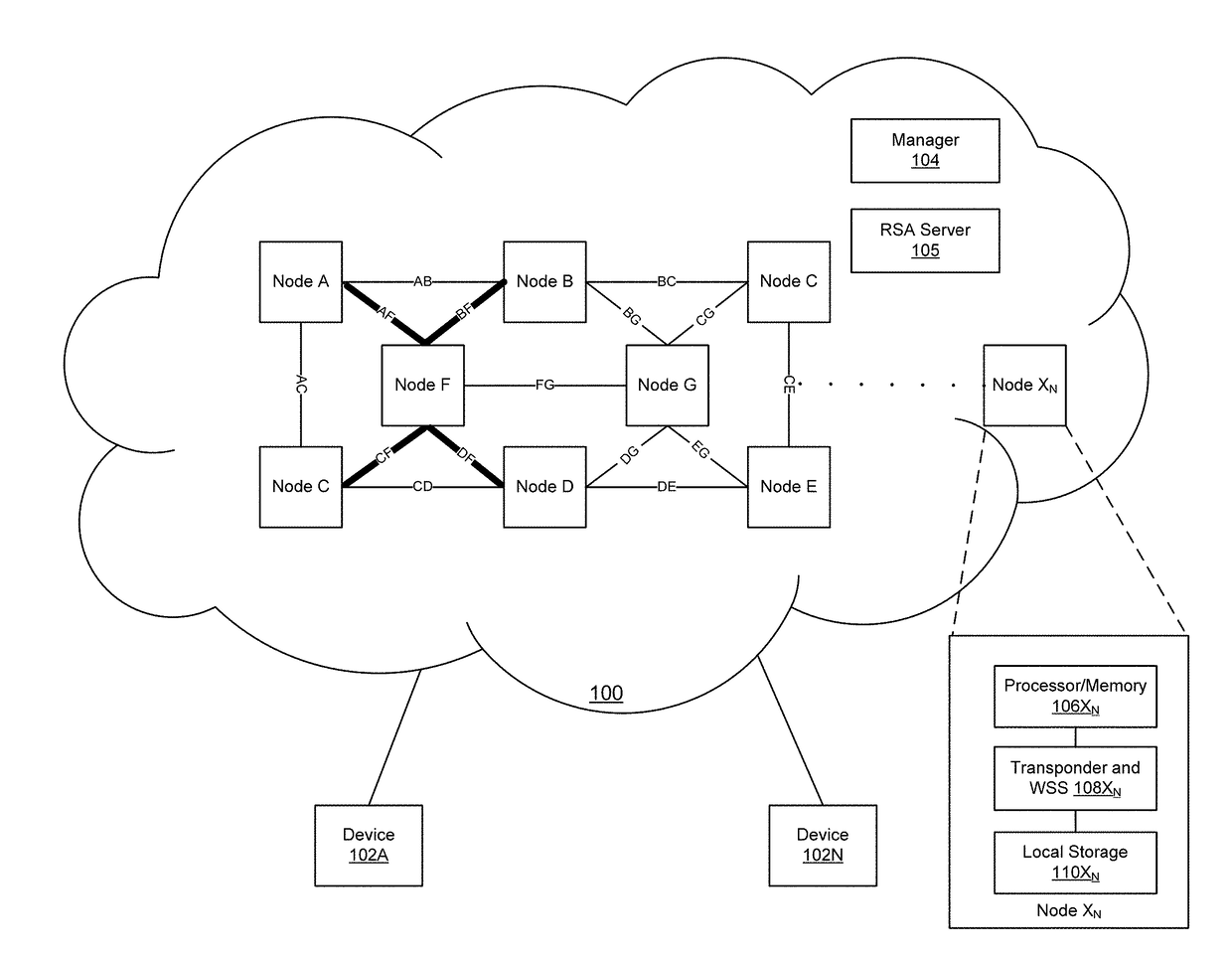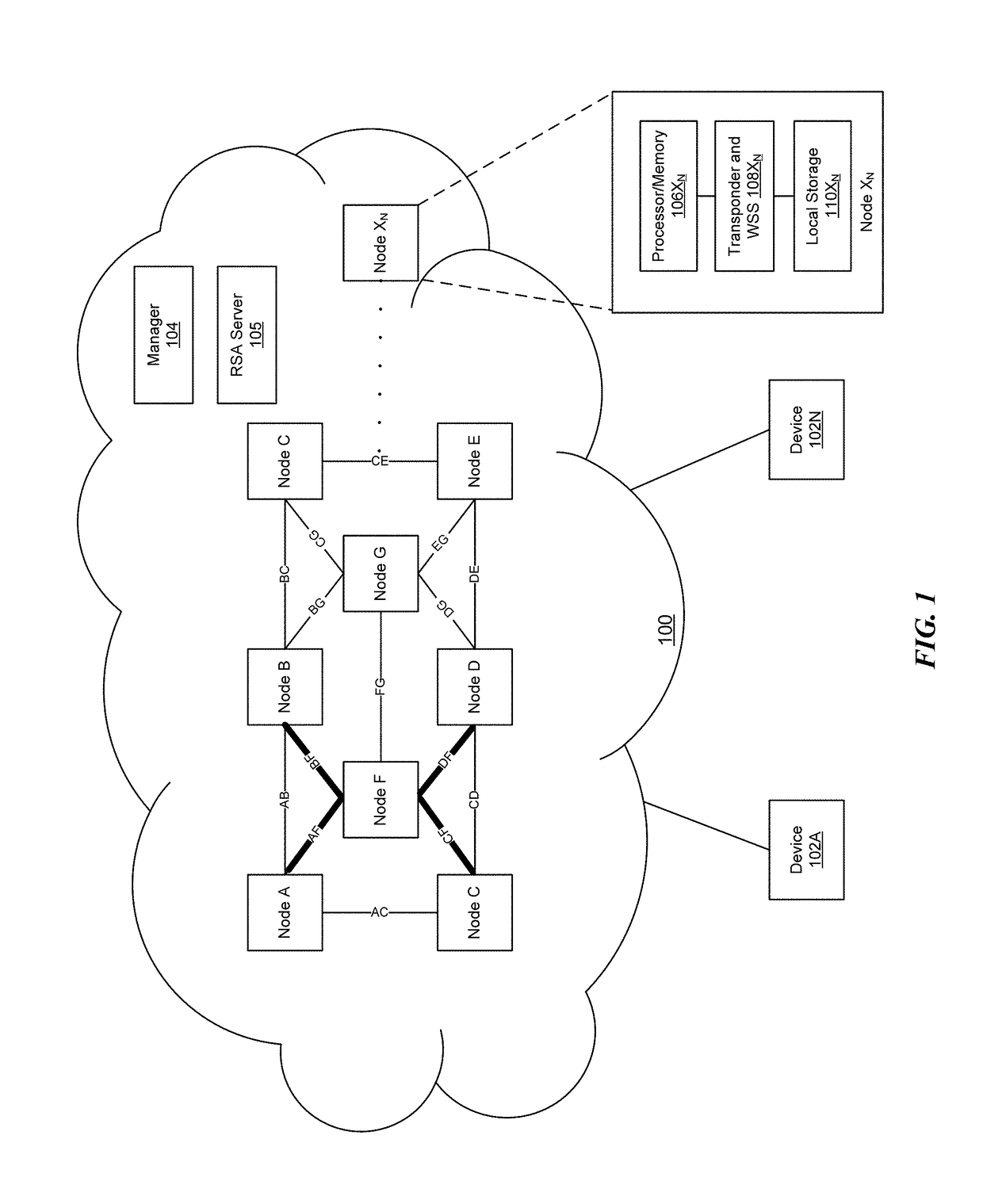Method and apparatus for efficient network utilization using superchannels
a network utilization and superchannel technology, applied in the field of optical networks, can solve the problems of dramatic growth in network traffic, new interactive applications will increasingly generate and consume enormous amounts of data, etc., and achieve the effect of bounded data rate and bounded data ra
- Summary
- Abstract
- Description
- Claims
- Application Information
AI Technical Summary
Benefits of technology
Problems solved by technology
Method used
Image
Examples
Embodiment Construction
[0022]The disclosure relates to technology for selection of a central or hub node in an optical network having superchannel connections with wavelength selective switching capability.
[0023]An optical network is constructed by selecting a central node among other nodes in the optical network. Each of the nodes is connected to the central node via a set of superchannels, where each of the superchannels has a bounded data rate. Wavelength selective switching may then be performed among the superchannels at the central node.
[0024]Network resources between the central node and each of the other network nodes are managed by dynamically allocating bandwidth to support communication among the other network nodes via the superchannels. Connections between the central node and the other network nodes are flexible grid connection, where network resources may be managed among the superchannels by dynamically reassigning spectrum to the superchannels for spectrum defragmentation.
[0025]It is unde...
PUM
 Login to View More
Login to View More Abstract
Description
Claims
Application Information
 Login to View More
Login to View More - R&D
- Intellectual Property
- Life Sciences
- Materials
- Tech Scout
- Unparalleled Data Quality
- Higher Quality Content
- 60% Fewer Hallucinations
Browse by: Latest US Patents, China's latest patents, Technical Efficacy Thesaurus, Application Domain, Technology Topic, Popular Technical Reports.
© 2025 PatSnap. All rights reserved.Legal|Privacy policy|Modern Slavery Act Transparency Statement|Sitemap|About US| Contact US: help@patsnap.com



